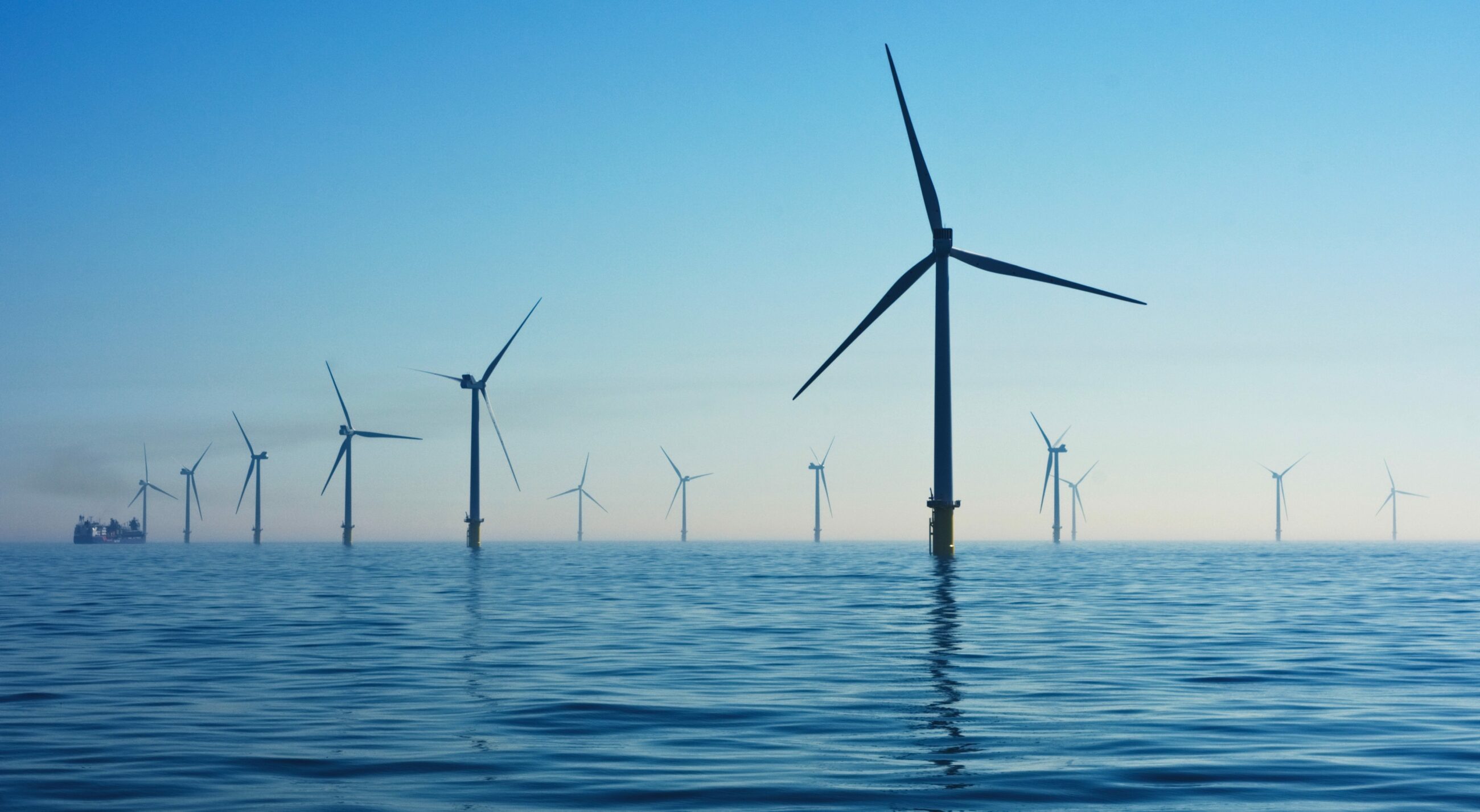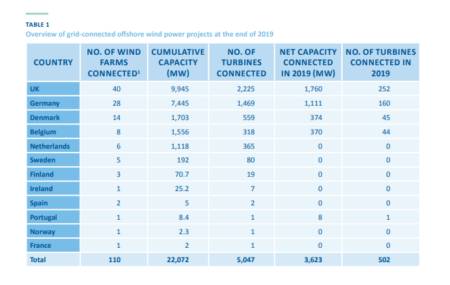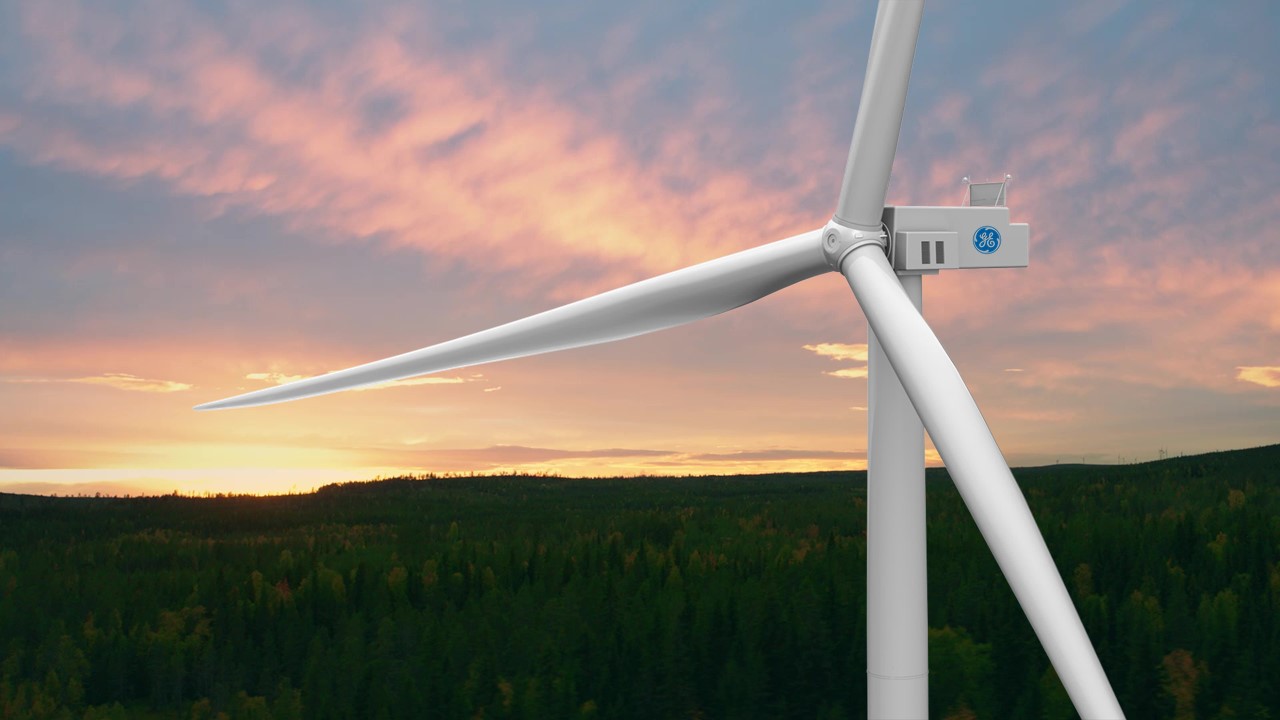News
Offshore wind
Wind energy
Wind farm planning and development
+2
45 Danish offshore wind turbines part of massive expansion of wind energy in the EU


Offshore wind is becoming an ever bigger part of the European green transition as 3.6 GW of offshore wind energy was installed in 2019. This means that Europe’s cumulative offshore wind capacity reached 22,072 MW at the end of 2019. Including sites with partial grid connection, there are now 110 offshore wind farms in 12 European countries and 5,047 grid-connected wind turbines.
Belgium, the UK and Denmark all set new national installation records. In Denmark, output from offshore wind energy increased by 28 per cent in 2019 – from approximately 1.3 GW to 1.7 GW, according to a new report by the European wind industry organisation WindEurope.
“2019 marked a new milestone in Danish offshore wind with a record high offshore capacity installation of 374 MW from Horns Rev III, the biggest offshore wind farm in Denmark to date. Impressive at it is, we will soon be breaking new records as we move toward 2030, where we expect to increase the cumulative offshore wind capacity from today’s 1.7 GW to 3.7 GW in 2025 and 5.7 GW in 2030, as a result of the ambitious 2018 Danish Energy Deal,” says CEO Jan Hylleberg, Wind Denmark.
Across Europe, turbines are also increasing in size and thereby generating more energy per turbine. In 2019, the average size of installed offshore turbines was 7.8 MW. Moreover, offshore wind farms are getting bigger. The average size rose to 600 MW per wind farm in 2019 – it was 300 MW in 2010. The largest offshore wind farm in the world is Hornsea 1 in the UK with its output of 1.2 GW. The wind farm is a joint venture between Ørsted and Global Infrastructure Partners.
However, Denmark is still looking for ways to improve output from offshore wind farms. In 2019, Denmark has established a giant test centre, Lindø Offshore Renewables Center (Lorc), to carry out tests of the new generation of wind turbines that will be able to reach a record-high output of over 20 MW.
[caption id="attachment_107973" align="alignnone" width="450"]
-Related solution: World’s largest offshore wind farm
Offshore wind prices are plummeting
The cost of offshore wind costs continues to plummet. It is possible in Denmark to build almost subsidy-free offshore wind farms in Denmark, and offshore wind is expected to become even cheaper as offshore wind is in increasing demand on the global and European markets.
“Europe really embraced offshore wind in 2019. Auction prices showed it is now cheaper to build offshore wind than new gas or coal plants. Several governments raised the amount they want to build. This time last year we were looking at 76 GW by 2030. Now it is 100 GW,” said WindEurope CEO Giles Dickson in a press release.
The European Commission estimates that Europe needs between 230 and 450 GW of offshore wind by 2050 to deliver on the new European Green Deal. In order to reach this ambitious goal, Europe is required to expand offshore wind power with 7 GW every year until 2030, and from then on ramp up the expansion to 18 GW yearly until 2050.
“The bigger numbers are doable and affordable. The new EU Offshore Wind Strategy in the Green Deal should map out clearly how to mobilise the investments needed for 450 GW. Crucially it should provide a masterplan (a) to develop the offshore and onshore grid connections and (b) to get the maritime spatial planning right. This will require ever closer cooperation between Governments in the North Sea and the Baltic,” said Giles Dickson.
Sources:















